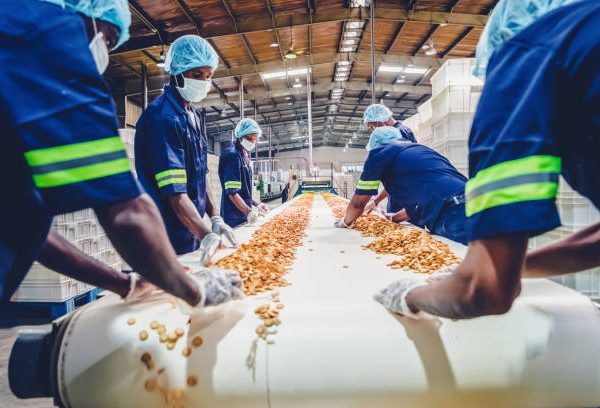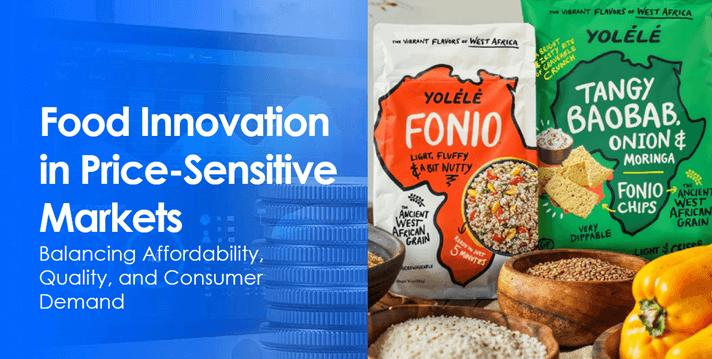Innovative Sourcing Strategies for Food Manufacturing in Africa

By moving beyond traditional procurement methods, businesses and organisations are unlocking new efficiencies and creating value for both producers and consumers. In this article, we discuss some innovative sourcing strategies that are making a significant impact:
1. Direct Farm Partnerships: Cutting Out the Middleman
One of the most effective ways to reduce costs and improve the livelihoods of smallholder farmers is through the establishment of direct farm partnerships. By contracting directly with farmer cooperatives under multi-year off-take agreements, businesses can eliminate the markups imposed by intermediaries, which can often range from 10% to 20%. This direct engagement fosters a more transparent and equitable value chain, ensuring that a larger share of the profit goes to the farmers who are the foundation of the food system.
A compelling example of this strategy in action is Java Foods in Zambia. During her 2023 visit, U.S. Treasury Secretary Janet Yellen highlighted their successful model of purchasing rice directly from female-led cooperatives. This direct sourcing approach not only stabilised the company’s raw material costs but also contributed to a 15% improvement in the yields of the participating farmers through better training and resource provision facilitated by the partnership. This demonstrates the win-win potential of direct farm partnerships: businesses secure reliable and potentially lower-cost supplies, while farmers gain access to stable markets, fair prices, and opportunities for capacity building.
2. Regional Ingredient Blends: Leveraging Local Abundance
For food brands aiming to provide cost-effective nutrition in Africa, strategically utilising locally sourced ingredients and blending them with necessary imported components, such as micronutrient premixes, presents a significant opportunity. This approach can help mitigate the impact of volatile global commodity prices and currency fluctuations while supporting local agricultural value chains. By carefully formulating recipes that incorporate indigenous crops, brands can create products that are both affordable and culturally relevant, tapping into local tastes and preferences.
Ghana’s success in optimising cassava-sorghum blends for biscuit production, as highlighted earlier with a 12% increase in profit margins in 2024, underscores the potential of this strategy. Food processors across Africa can explore similar opportunities by identifying underutilised local staples like millet, sorghum, cowpeas, or even plantain flour, and determining how they can be effectively integrated into existing product lines or used to create new, affordable, nutritious options. Brands should invest in research and development to understand the optimal blending ratios that maintain both nutritional integrity and consumer appeal. Collaborating with local agricultural research institutions can provide valuable insights into the nutritional profiles and processing characteristics of indigenous crops.

Our latest report, “Food Innovation in Price-Sensitive Markets,” dedicates significant analysis to this critical consumer behaviour shift across key African markets. Within its pages, you’ll find a deep dive into the data illustrating the increasing appetite for smaller stock-keeping units across a diverse range of both staple and processed food categories. The report goes beyond simply identifying this shift, providing you with actionable insights on how your brand can strategically innovate with product sizes. We explore effective methodologies for developing pricing architectures that resonate with these budget-conscious consumers, ensuring that affordability doesn’t come at the expense of perceived value.
Download the report via the link.
3. Waste-to-Value Upcycling: Turning By-products into Assets
Embracing the principles of a circular economy through waste-to-value upcycling offers a compelling avenue for food brands to reduce costs, enhance sustainability, and potentially create unique product offerings. By creatively repurposing food waste and by-products, companies can transform potential liabilities into valuable resources.
In the African context, where post-harvest losses and food waste are significant challenges, the potential for upcycling is substantial. For instance, fruit peels, vegetable trimmings, and spent grains from brewing can be processed into animal feed, food ingredients (like flours or fibre), or even bio-based packaging materials. In the example of Inseco in South Africa, converting fruit and vegetable by-products into insect meal provides a cost-effective alternative to traditional protein sources like soy, with reported savings of 30%. While the initial investment in technology and processes for upcycling may be a consideration, the long-term benefits in terms of reduced waste disposal costs, new revenue streams, and enhanced brand image can be significant. Food brands can explore partnerships with agri-tech startups and research institutions to identify viable upcycling opportunities for their specific waste streams. According to some research, insect meal can be more expensive than traditional soy meal currently, so a thorough cost-benefit analysis is crucial. However, the environmental benefits and potential for future cost reductions as the insect farming industry scales up make it a worthwhile area to explore.
4. Tech-Enabled Traceability: Ensuring Quality and Building Trust
Integrating technology for enhanced traceability throughout the supply chain is no longer just a matter of efficiency; it is becoming a critical factor in ensuring food safety, reducing losses, and building consumer trust. For food brands operating in Africa, where supply chains can be complex and fragmented, traceability solutions offer a powerful tool for optimising operations and enhancing brand reputation.
Blockchain technology, mobile-based QR code systems, and IoT (Internet of Things) sensors can provide end-to-end visibility, allowing brands to track the journey of their ingredients from farm to consumer in real-time. This not only helps in identifying and addressing potential quality issues or spoilage points quickly, as demonstrated by Red River Foods’ reduction in tomato rejects by using Farmforce software, but also provides valuable data for supply chain optimisation and forecasting. Furthermore, transparent traceability systems can empower consumers to make more informed purchasing decisions by providing information about the origin, production methods, and quality standards of the food they buy. This increased transparency can build trust and loyalty, particularly as consumers in Africa become more discerning about the safety and quality of their food. Governments in Africa, like Nigeria’s Federal Government, are also recognising the importance of traceability in the agricultural commodity sector to improve quality, sustainability, and access to international markets. Food brands should explore partnerships with agri-tech companies to implement cost-effective and user-friendly traceability solutions that meet their specific supply chain needs and enhance their overall value proposition.
Ready to invent the future?
Our teams possess extensive in-market experience that drives measurable growth for brands. Please reach out to us to learn more.
